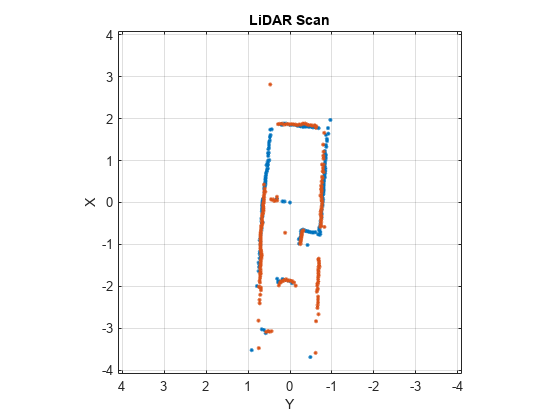transformScan
Transform laser scan based on relative pose
Syntax
Description
[
transforms the laser scan specified in transRanges,transAngles]
= transformScan(ranges,angles,relPose)ranges and
angles by using the specified relative pose,
relPose.
Examples
Input Arguments
Output Arguments
Extended Capabilities
Version History
Introduced in R2017a

